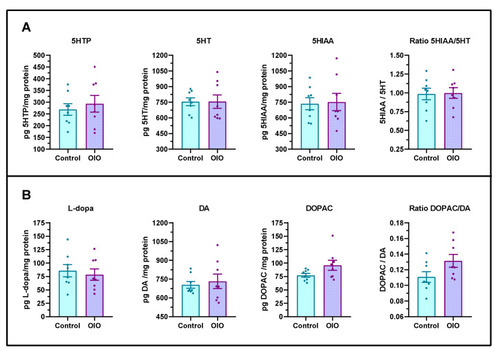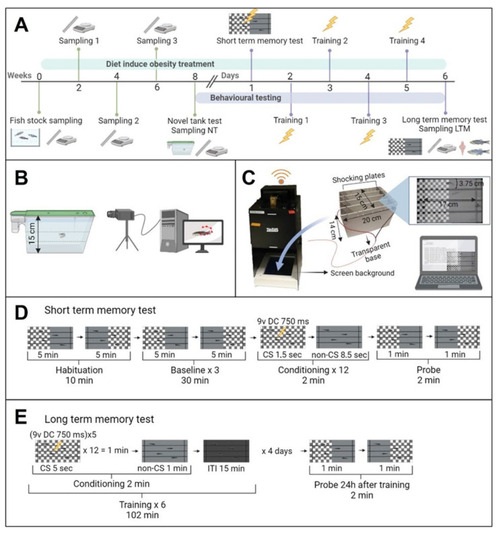- Title
-
Obesity Impairs Cognitive Function with No Effects on Anxiety-like Behaviour in Zebrafish
- Authors
- Godino-Gimeno, A., Thörnqvist, P.O., Chivite, M., Míguez, J.M., Winberg, S., Cerdá-Reverter, J.M.
- Source
- Full text @ Int. J. Mol. Sci.
|
Experimental dynamics of morphological parameters. Fish were sampled every two weeks in 1, 2, 3, and NT (NTDT testing day) and one week between NT and LTM (long-term memory test probe phase). ( |
|
( |
|
Novel tank diving test (NTDT). Anxiety-like behaviours were measured in three zones: bottom, middle, and top. ( |
|
Brain serotoninergic and dopaminergic metabolites. ( |
|
Effects of obesity on short- and long-term memory. ( |
|
( |






